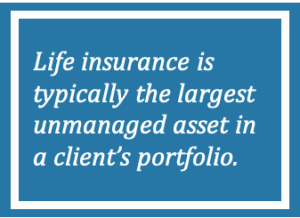The 25-Second Trick For Pacific Prime
The 25-Second Trick For Pacific Prime
Blog Article
Getting The Pacific Prime To Work
Table of ContentsPacific Prime Things To Know Before You BuyNot known Incorrect Statements About Pacific Prime The Single Strategy To Use For Pacific PrimeNot known Facts About Pacific PrimeThe Basic Principles Of Pacific Prime

This is since the information were accumulated for a duration of solid financial performance. Of the estimated 42 million individuals that were uninsured, just about regarding 420,000 (about 1 percent) were under 65 years old, the age at which most Americans become qualified for Medicare; 32 million were adults in between ages 18 and 65, around 19 percent of all adults in this age; and 10 million were children under 18 years of age, about 13.9 percent of all children (Mills, 2000).
These price quotes of the number of individuals without insurance are produced from the yearly March Supplement to the Current Population Survey (CPS), conducted by the Census Bureau. Unless or else kept in mind, nationwide estimates of people without medical insurance and percentages of the populace with various kinds of protection are based on the CPS, one of the most widely made use of resource of estimates of insurance coverage and uninsurance rates.
Pacific Prime - An Overview

Still, the CPS is particularly beneficial since it creates annual estimates reasonably quickly, reporting the previous year's insurance policy protection estimates each September, and since it is the basis for a constant set of estimates for more than 20 years, allowing for analysis of fads in protection over time. For these factors, along with the extensive use the CPS in other studies of insurance protection that are presented in this report, we rely upon CPS estimates, with constraints kept in mind.

The quote of the number of uninsured people expands when a populace's insurance policy standing is tracked for a number of years. Over a three-year period starting early in 1993, 72 million people, 29 percent of the U.S. https://packersmovers.activeboard.com/t67151553/how-to-connect-canon-mg3620-printer-to-computer/?ts=1712004612&direction=prev&page=last#lastPostAnchor. population, were without coverage for at the very least one month. Within a single year (1994 ), 53 million people experienced a minimum of a month without coverage (Bennefield, 1998a)
6 out of every 10 uninsured grownups are themselves utilized. Although working does boost the chance that a person and one's relative will certainly have insurance policy, it is not an assurance. Even members of family members with 2 full-time breadwinner have virtually a one-in-ten possibility of being uninsured (9.1 percent uninsured price) (Hoffman and Pohl, 2000).
Getting The Pacific Prime To Work
New immigrants make up a significant proportion of individuals without medical insurance. One analysis has actually associated a considerable section of the current growth in the dimension of the U.S. uninsured populace to immigrants who showed up in the country between 1994 and 1998 (Camarota and Edwards, 2000). Current immigrants (those that came to the United States within the past four years) do have a high price of being without insurance (46 percent), but they and their kids make up just 6 percent of those without insurance coverage across the country (Holahan et al., 2001).
The relationship between health and wellness insurance policy and accessibility to care is well developed, as recorded later on in this phase. The partnership between health and wellness insurance and wellness outcomes is neither direct neither simple, a considerable medical and health and wellness services study literature links health insurance policy coverage to enhanced accessibility here to care, much better high quality, and enhanced personal and population wellness status.
Degrees of evaluation for analyzing the impacts of uninsurance. It concentrates particularly on those without any health and wellness insurance coverage for any kind of length of time.
Some Ideas on Pacific Prime You Should Know
The troubles dealt with by the underinsured remain in some areas comparable to those encountered by the uninsured, although they are typically much less serious. global health insurance. Uninsurance and underinsurance, nonetheless, include clearly various plan issues, and the approaches for resolving them might vary. Throughout this research study and the 5 records to comply with, the primary focus is on individuals without medical insurance and hence no aid in spending for health and wellness care beyond what is available through charity and safety and security internet establishments
Medical insurance is a powerful aspect impacting receipt of care because both people and medical professionals react to the out-of-pocket cost of services - https://www.indiegogo.com/individuals/37416909. Health insurance coverage, nevertheless, is neither essential neither sufficient to get to clinical solutions. Nonetheless, the independent and direct impact of medical insurance coverage on access to health and wellness services is well established.
Others will get the health and wellness treatment they need also without medical insurance, by spending for it expense or seeking it from providers that provide treatment complimentary or at highly subsidized prices. For still others, medical insurance alone does not make sure invoice of care because of various other nonfinancial obstacles, such as a lack of healthcare providers in their area, restricted accessibility to transportation, illiteracy, or etymological and cultural differences.
Pacific Prime Things To Know Before You Buy
Formal study about without insurance populations in the United States dates to the late 1920s and very early 1930s when the Board on the Price of Healthcare generated a collection of reports about financing doctor office gos to and hospitalizations. This problem became significant as the numbers of medically indigent climbed throughout the Great Clinical depression.
Report this page